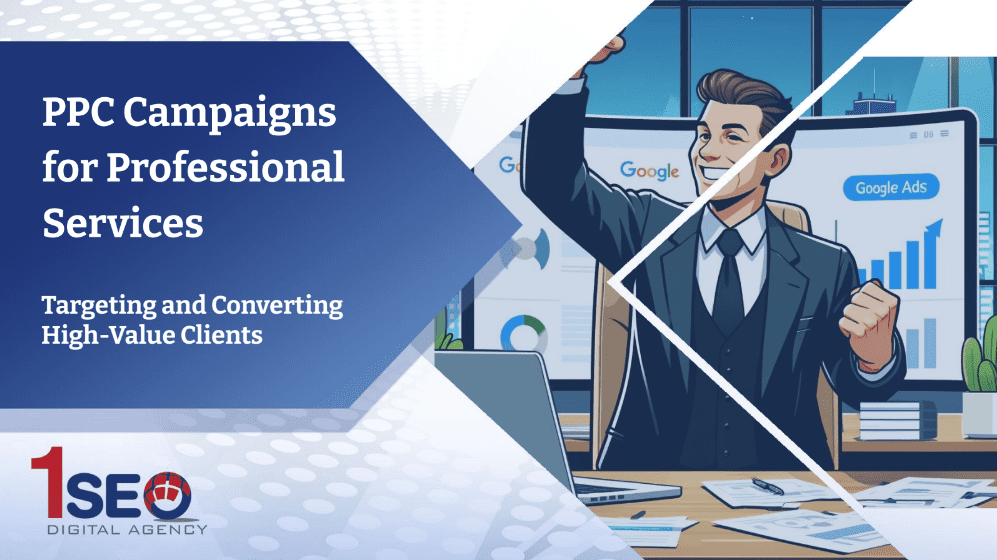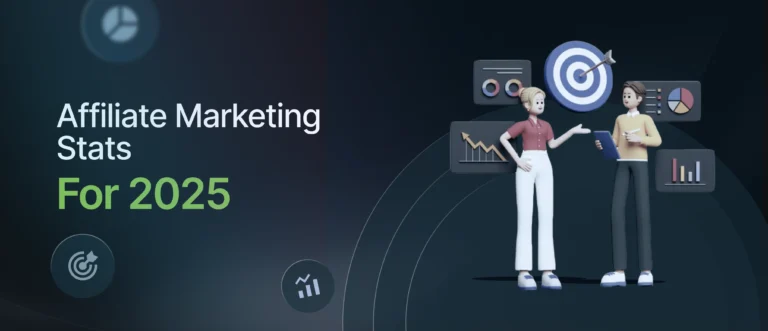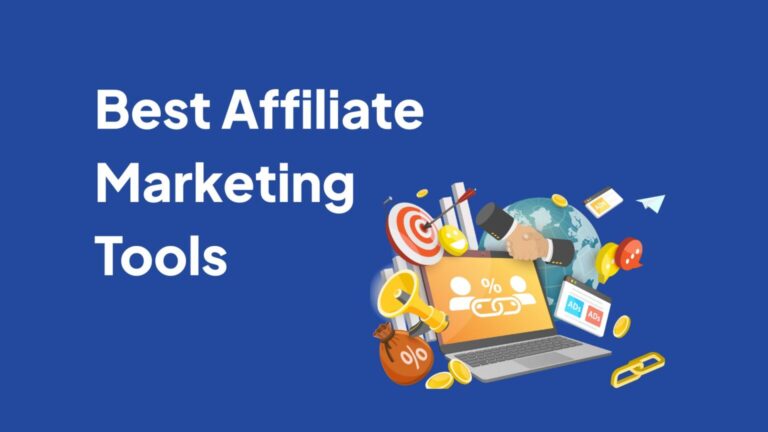Mastering PPC Campaigns: Advanced Techniques for Higher Conversions and ROI
Pay-per-click (PPC) advertising is a powerful tool for businesses looking to drive targeted traffic, generate leads, and boost sales. However, merely setting up a campaign isn’t enough; you need to master advanced strategies to maximize your return on investment (ROI) and increase conversions. In this article, we will delve into advanced PPC techniques, providing actionable insights and best practices to help you get the most out of your campaigns.
Understanding the Basics of PPC Campaigns
Before diving into advanced techniques, it’s essential to have a solid grasp of PPC fundamentals. PPC is an online advertising model where advertisers pay a fee each time their ad is clicked. It’s a way of buying visits to your site rather than earning them organically. Popular platforms like Google Ads and Microsoft Ads allow advertisers to bid on keywords relevant to their products or services.
The key elements of a PPC campaign include keywords, ad groups, landing pages, and ad copies. Keywords are the terms that trigger your ads when users search for them. Ad groups consist of related keywords and corresponding ads, while ad copies are the text or visuals that appear in your ads. Landing pages are the web pages users are directed to after clicking your ad, and they play a crucial role in converting clicks into leads or sales.
To master PPC campaigns, you need to understand how these elements work together and how they can be optimized. With this foundation in place, let’s explore advanced strategies that can take your PPC efforts to the next level.
Keyword Research and Selection: Go Beyond the Obvious
Effective keyword research is at the heart of a successful PPC campaign. However, focusing only on popular, high-traffic keywords can limit your potential. Instead, consider incorporating long-tail keywords, which are more specific phrases with lower search volumes but higher conversion rates.
Long-tail keywords are often less competitive, making them cost-effective. For instance, instead of targeting “running shoes,” a long-tail keyword like “best running shoes for flat feet” can attract a more targeted audience. This approach increases the likelihood of conversions because users searching for specific phrases are usually closer to making a purchase.
Additionally, using negative keywords can help refine your targeting. Negative keywords prevent your ads from appearing in irrelevant searches, saving you money on clicks that are unlikely to convert. For example, if you sell luxury handbags, adding “cheap” as a negative keyword ensures your ad doesn’t show up when users search for “cheap handbags.”
Crafting Compelling Ad Copies
Ad copy is the first impression users have of your brand in a PPC campaign. Writing persuasive and compelling ad copy is crucial for driving clicks and conversions. To create effective ad copies, you must understand your target audience’s needs, pain points, and desires.
Start with a strong headline that grabs attention. Your headline should be clear, relevant, and include your primary keyword. For example, a headline like “Get the Best Running Shoes for Flat Feet” directly addresses the user’s query and promises a solution. The description should highlight the unique selling points of your product or service and include a call to action (CTA) that encourages users to click, such as “Shop Now,” “Get a Free Quote,” or “Learn More.”
Experimenting with different ad formats, such as responsive search ads, can also improve performance. Responsive search ads allow you to create multiple headlines and descriptions, which Google then tests to determine the best-performing combinations. This flexibility helps tailor your message to different users, improving your ad relevance and click-through rate (CTR).
Using Ad Extensions for Enhanced Visibility
Ad extensions are a valuable feature in PPC campaigns that can significantly boost your ad’s visibility and effectiveness. They provide additional information beyond the standard ad copy, making your ad more informative and appealing to users. There are several types of ad extensions, each serving a different purpose.
Sitelink extensions allow you to include additional links to specific pages on your website, such as “About Us,” “Pricing,” or “Contact Us.” This feature enables users to navigate directly to the most relevant part of your site, increasing the chances of a conversion. Call extensions add a phone number to your ad, encouraging users to call your business directly, which is particularly useful for local businesses.
Other popular extensions include location extensions, which display your business address, and callout extensions, which highlight key features like “Free Shipping” or “24/7 Support.” Utilizing these extensions not only makes your ad more informative but also improves your ad’s quality score, potentially reducing your cost-per-click (CPC).
Leveraging Audience Targeting
Advanced audience targeting can greatly enhance the performance of your PPC campaigns. Rather than targeting users solely based on keywords, audience targeting allows you to reach specific groups of people based on their demographics, interests, behaviors, and past interactions with your website.
Remarketing is a powerful strategy within audience targeting. It involves showing ads to users who have previously visited your website but did not convert. By retargeting these users with tailored ads, you can remind them of your offerings and encourage them to complete their purchase. For example, if a user added a product to their cart but didn’t check out, you can show them an ad offering a discount on that product.
In-market audiences and custom intent audiences are other advanced targeting options. In-market audiences target users who are actively researching or considering products similar to yours, while custom intent audiences allow you to create a list of users based on specific keywords they have searched for. These options help you reach potential customers who are further along in the buying process.
Optimizing Landing Pages for Better Conversions
The success of a PPC campaign isn’t determined solely by the ad; the landing page plays a crucial role in converting clicks into leads or sales. A well-designed landing page that aligns with your ad’s message can significantly boost your conversion rates.
Start by ensuring your landing page is relevant to the ad. If your ad promotes a discount on running shoes, the landing page should immediately highlight this offer. Consistency between the ad copy and the landing page content reduces bounce rates and builds trust with users. Additionally, use compelling headlines, clear CTAs, and high-quality visuals to keep users engaged.
Page load speed is another critical factor in landing page optimization. Users are likely to abandon a page if it takes too long to load, especially on mobile devices. Use tools like Google PageSpeed Insights to analyze and improve your page speed. A faster, more user-friendly landing page enhances the overall user experience and increases the likelihood of conversions.
Utilizing A/B Testing to Improve Performance
A/B testing, or split testing, is an essential technique for optimizing your PPC campaigns. It involves creating two or more versions of an ad, landing page, or other campaign element and testing them against each other to determine which performs better.
When A/B testing ads, you might experiment with different headlines, descriptions, CTAs, or even images. By analyzing the performance metrics, such as click-through rate and conversion rate, you can identify the most effective version. Similarly, testing different variations of landing pages can help you understand what layout, copy, or design elements resonate best with your audience.
It’s important to test one element at a time to accurately determine what’s driving the change in performance. Regularly conducting A/B tests and implementing the findings can lead to continuous improvement in your PPC campaigns, resulting in higher conversions and better ROI.
Setting Up Conversion Tracking for Accurate Measurement
Without proper tracking, it’s impossible to measure the success of your PPC campaigns effectively. Conversion tracking allows you to monitor specific actions users take after clicking your ad, such as making a purchase, filling out a form, or signing up for a newsletter.
To set up conversion tracking, you’ll need to add a tracking code (pixel) to your website. This code records conversions and provides valuable data on user behavior. Google Ads offers a straightforward way to set up conversion tracking, and you can customize it to track different types of conversions based on your business goals.
Analyzing conversion data helps you identify which keywords, ads, and landing pages are driving the most valuable actions. By understanding these insights, you can make data-driven decisions to optimize your campaigns, allocate your budget more effectively, and improve your overall ROI.
Using Smart Bidding Strategies
Smart bidding is a subset of automated bidding strategies in Google Ads that uses machine learning to optimize your bids for conversions or conversion value. These strategies consider various signals, such as device, location, time of day, and user intent, to adjust bids in real-time.
There are several smart bidding options to choose from, including Target CPA (Cost Per Acquisition), Target ROAS (Return on Ad Spend), and Maximize Conversions. For instance, if your goal is to achieve a specific cost per acquisition, Target CPA bidding adjusts your bids to help you meet that target. Similarly, Target ROAS focuses on maximizing your return on ad spend.
While smart bidding can save time and improve performance, it’s essential to monitor your campaigns closely. Regularly review your bid strategies and adjust as needed based on performance data. Combining smart bidding with other advanced techniques can significantly boost your PPC campaign results.
Analyzing Competitor Strategies
Understanding what your competitors are doing can provide valuable insights to refine your PPC strategies. By analyzing competitor ads, keywords, and landing pages, you can identify gaps in your own campaigns and discover new opportunities for improvement.
Tools like SEMrush, SpyFu, and Ahrefs allow you to research competitor keywords and see which ones they’re bidding on. You can also analyze their ad copies to understand their messaging and identify what resonates with their audience. This information can help you craft more compelling ads and optimize your keyword strategy.
Additionally, consider conducting a SWOT analysis (Strengths, Weaknesses, Opportunities, Threats) of your top competitors. This exercise helps you understand their strengths and weaknesses, identify potential threats, and uncover opportunities to differentiate your campaigns and gain a competitive edge.
Managing Your PPC Budget Effectively
Budget management is a critical aspect of PPC campaigns, especially for businesses with limited resources. Effective budget management involves setting realistic daily and monthly budgets, allocating funds strategically across campaigns, and continually adjusting your spending based on performance data.
Start by defining your overall PPC budget and breaking it down into specific allocations for different campaigns. Prioritize campaigns that target high-intent keywords or proven audiences that have a history of converting well. This strategy ensures your budget is used effectively, focusing on areas that yield the best results.
Monitoring your campaign performance closely is essential to identify underperforming ads or keywords that drain your budget without providing adequate returns. Use tools like Google Ads’ Budget Report to analyze how your budget is spent across different campaigns. This insight allows you to pause low-performing campaigns, adjust bids, or reallocate funds to higher-performing ones, ultimately maximizing your return on investment (ROI).
Enhancing Campaigns with Remarketing
Remarketing is an advanced PPC strategy that targets users who have previously interacted with your website but did not convert. This approach is highly effective because it targets warm leads—people who are already familiar with your brand and have shown interest in your products or services.
Remarketing works by placing a tracking pixel on your website, which adds visitors to your remarketing list. Once they leave your site without converting, they will see your ads across various platforms as they browse the internet. This constant exposure keeps your brand top of mind and increases the likelihood of them returning to complete their purchase.
Dynamic remarketing takes this a step further by showing tailored ads that display the exact products or services users viewed on your site. This personalized approach can significantly boost conversion rates by presenting users with highly relevant content based on their previous interactions. To make the most out of remarketing, ensure that your ad copy is compelling and that your offer provides a strong incentive for users to return, such as a discount or free shipping.
Leveraging Google Shopping Ads for E-commerce
For e-commerce businesses, Google Shopping Ads can be a game-changer in PPC campaigns. These ads appear at the top of Google search results and feature product images, prices, and store information, making them highly attractive and informative for potential buyers.
To get started with Google Shopping Ads, you need to set up a Google Merchant Center account and submit your product feed. The product feed includes essential details about your products, such as titles, descriptions, prices, and images. Optimizing this feed is crucial because Google uses it to match your products with relevant search queries.
Shopping ads are particularly effective because they provide users with a visual preview of the product, which can influence their purchasing decisions. The high visibility and informative nature of these ads make them more likely to attract clicks from users with strong purchase intent. Regularly update your product feed to reflect changes in pricing, availability, and promotions to ensure your ads remain accurate and effective.
Utilizing Geotargeting to Reach Local Audiences
Geotargeting, or location targeting, is an advanced PPC technique that allows you to show your ads to users in specific geographic locations. This is particularly beneficial for businesses that operate in specific areas or want to reach customers in certain regions.
With geotargeting, you can set your ads to appear only to users within a defined radius around your business location. This feature helps you target local customers who are more likely to visit your store or purchase your services. For example, a local restaurant can target users within a 5-mile radius, increasing the likelihood of attracting nearby diners.
Geotargeting can also be used to tailor your ad messages based on location. For instance, you might offer a special promotion for users in a specific city or highlight location-specific services. By optimizing your campaigns for specific geographic areas, you can increase your ad relevance and improve conversion rates.
Using Ad Scheduling to Optimize Performance
Ad scheduling, or dayparting, is a PPC strategy that involves setting your ads to run only at certain times of the day or days of the week when they are most likely to perform well. This technique helps you maximize your ad spend by targeting users when they are most active and likely to convert.
To implement ad scheduling, analyze your campaign performance data to identify peak times when your ads receive the highest click-through rates and conversions. For example, if you notice that most of your conversions occur between 9 AM and 5 PM on weekdays, you can schedule your ads to run only during these hours, reducing wasted spend during off-peak times.
Ad scheduling is especially useful for businesses with limited budgets, as it allows you to focus your resources on high-performing times. Additionally, you can set different bid adjustments based on the time of day, increasing your bids during peak hours to maximize visibility and lowering them during less active periods.
Analyzing and Improving Quality Score
Quality Score is a crucial metric in PPC campaigns that affects both your ad ranking and the cost-per-click (CPC). It is determined by factors such as the relevance of your ad copy, the quality of your landing page, and the expected click-through rate (CTR). A higher Quality Score leads to better ad placements and lower costs.
Improving your Quality Score starts with optimizing your ad relevance. Ensure that your ad copy closely matches the keywords you are targeting. This alignment signals to Google that your ad is relevant to the user’s search query. Additionally, focus on enhancing your CTR by creating compelling ad copies that include strong calls to action.
The quality of your landing page also plays a significant role in your Quality Score. Your landing page should provide a seamless user experience, be mobile-friendly, and load quickly. Regularly review your Quality Score and make necessary adjustments to improve it, as a higher score can lead to better performance and reduced advertising costs.
Implementing Negative Keywords for Better Targeting
Negative keywords are an often underutilized tool in PPC campaigns that can significantly improve your targeting and reduce wasted spend. Negative keywords prevent your ads from showing up in irrelevant searches, ensuring that you only pay for clicks from users who are genuinely interested in your products or services.
For instance, if you sell luxury watches, you might want to add “cheap” or “affordable” as negative keywords to avoid attracting users searching for low-cost options. By filtering out these irrelevant searches, you can focus your budget on more relevant and high-intent queries, leading to higher conversion rates.
Regularly review your search term reports to identify new negative keywords that may be draining your budget without yielding conversions. Continuously refining your negative keyword list helps improve the overall efficiency of your PPC campaigns and increases your ROI.
Monitoring and Optimizing Campaign Performance
Monitoring and optimizing your PPC campaigns is an ongoing process that requires regular analysis of key performance metrics. These metrics include click-through rate (CTR), conversion rate, cost-per-click (CPC), and return on ad spend (ROAS). By keeping a close eye on these KPIs, you can identify areas of improvement and make data-driven adjustments.
Use tools like Google Analytics and Google Ads’ built-in reporting features to track your campaign performance. Look for patterns and trends in your data, such as which keywords are driving the most conversions or which ads have the highest CTR. Based on this analysis, you can refine your targeting, adjust your bids, or test new ad copies to enhance your results.
Regular performance reviews help you stay agile and responsive to changes in the market or user behavior. By continuously optimizing your campaigns, you can maximize your ROI and ensure that your PPC efforts remain effective and profitable.
Conclusion: Mastering PPC for Maximum ROI
Mastering PPC campaigns requires a combination of strategic planning, in-depth analysis, and continuous optimization. By leveraging advanced techniques such as audience targeting, remarketing, smart bidding, and A/B testing, you can significantly enhance your campaign performance and achieve higher conversions.
Remember, the key to a successful PPC strategy is ongoing monitoring and adaptation. The digital advertising landscape is constantly evolving, and staying ahead of the curve with innovative strategies and data-driven decisions will set you apart from the competition. With a focus on optimizing every aspect of your PPC campaigns—from keyword selection to landing page design—you can drive more qualified traffic, increase conversions, and maximize your return on investment.
By implementing these advanced techniques, you will not only improve the effectiveness of your PPC campaigns but also build a strong foundation for sustained growth and profitability. Keep experimenting, analyzing, and refining your approach to master the art of PPC advertising.






